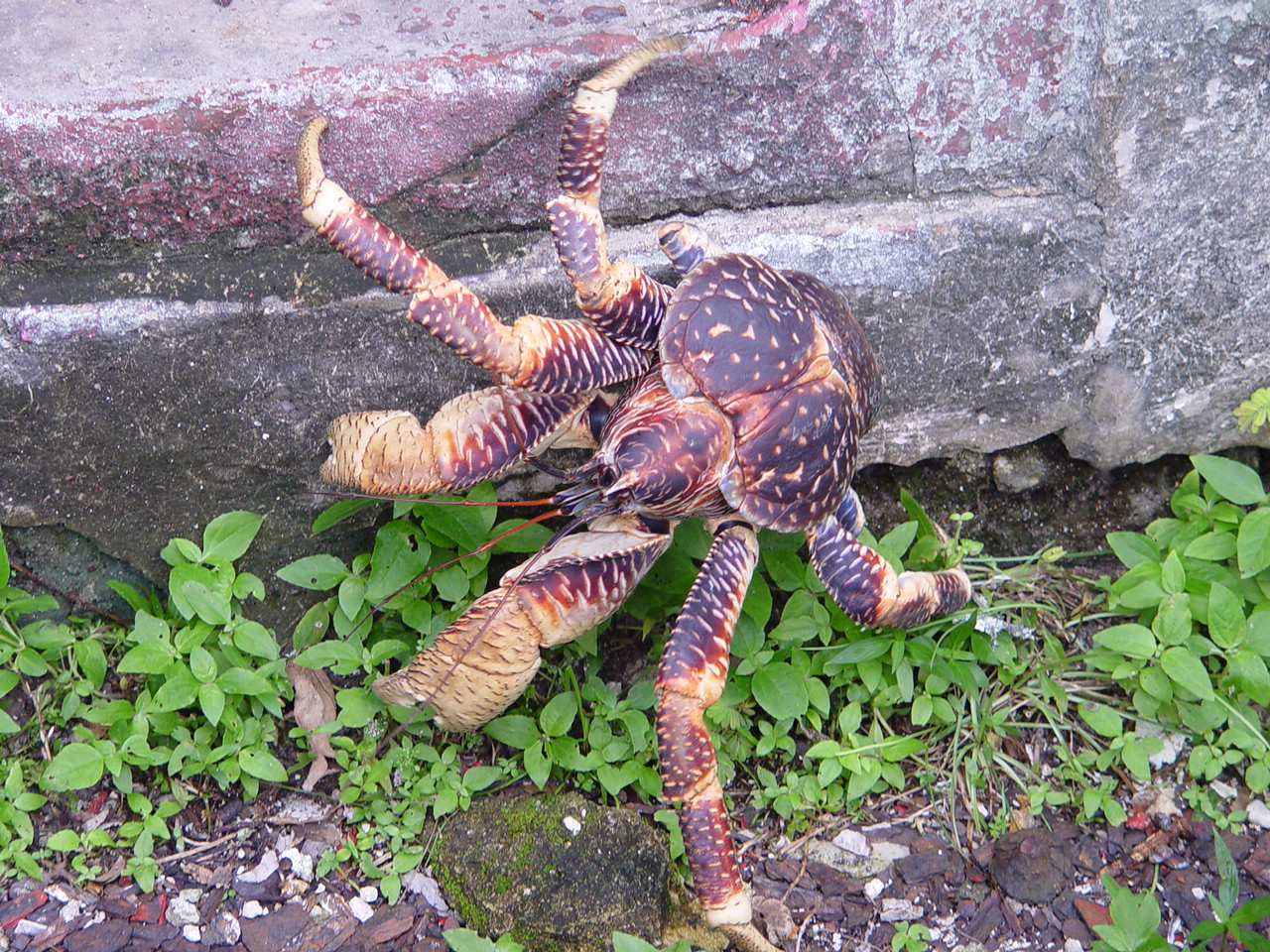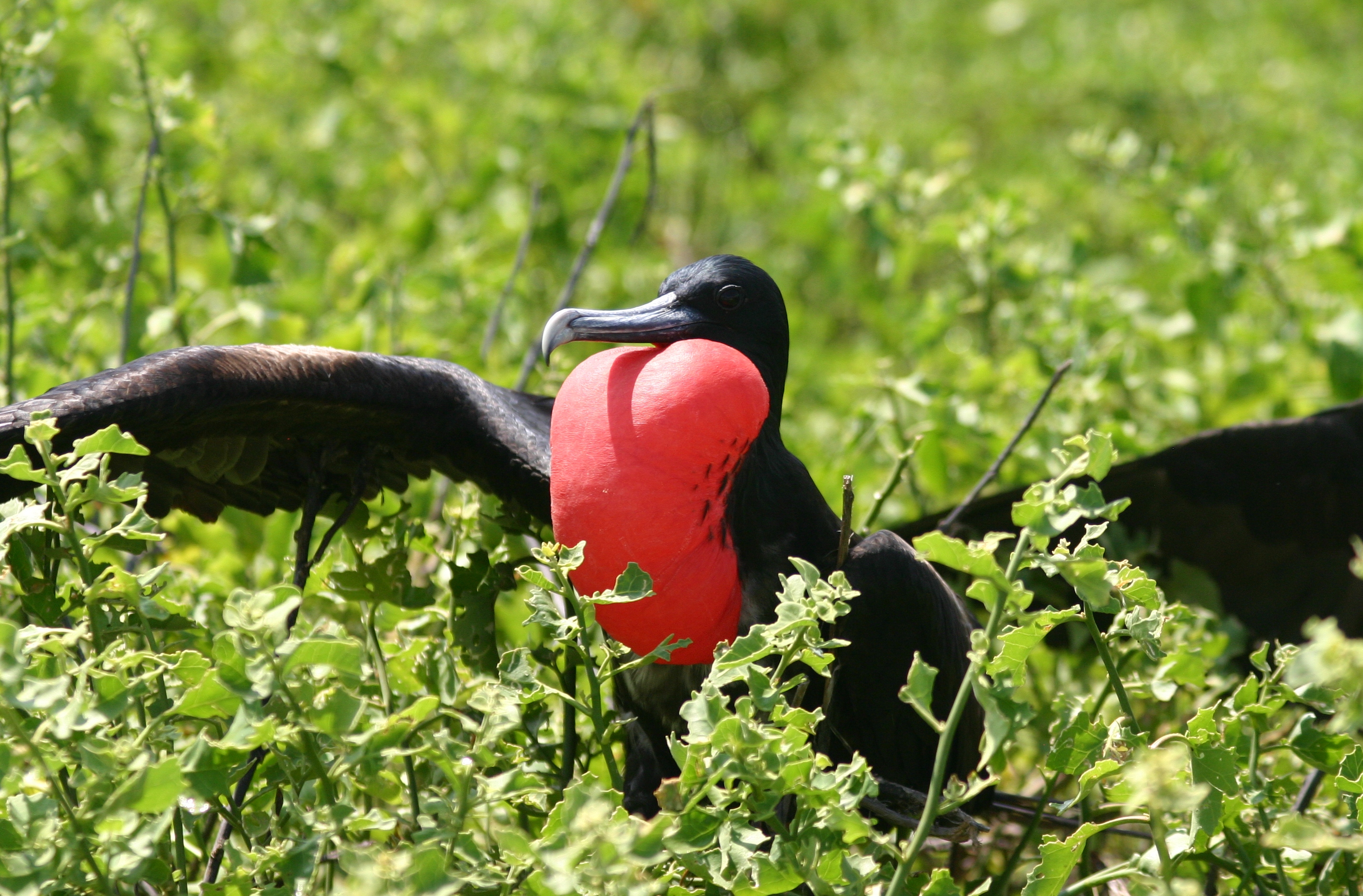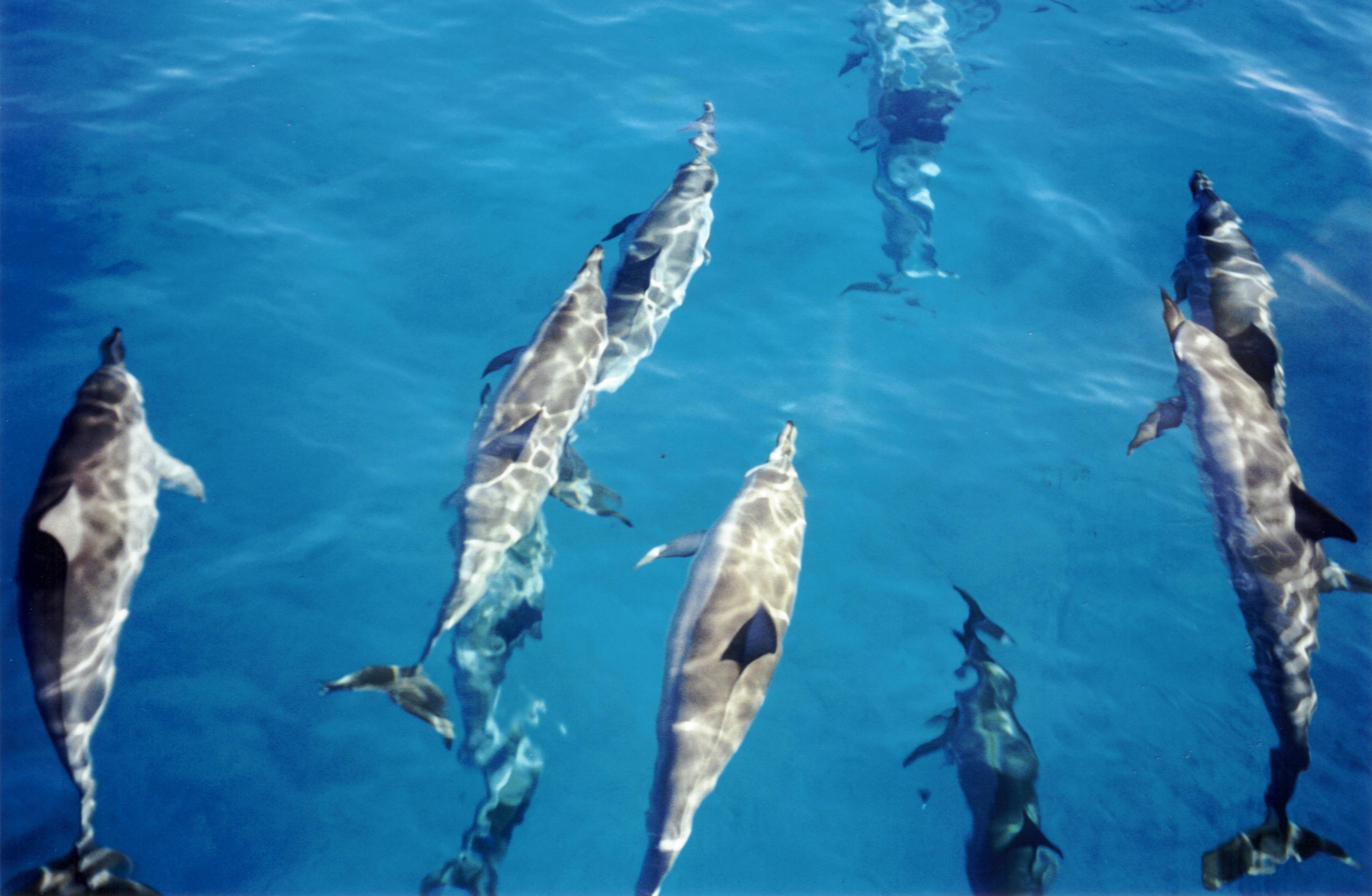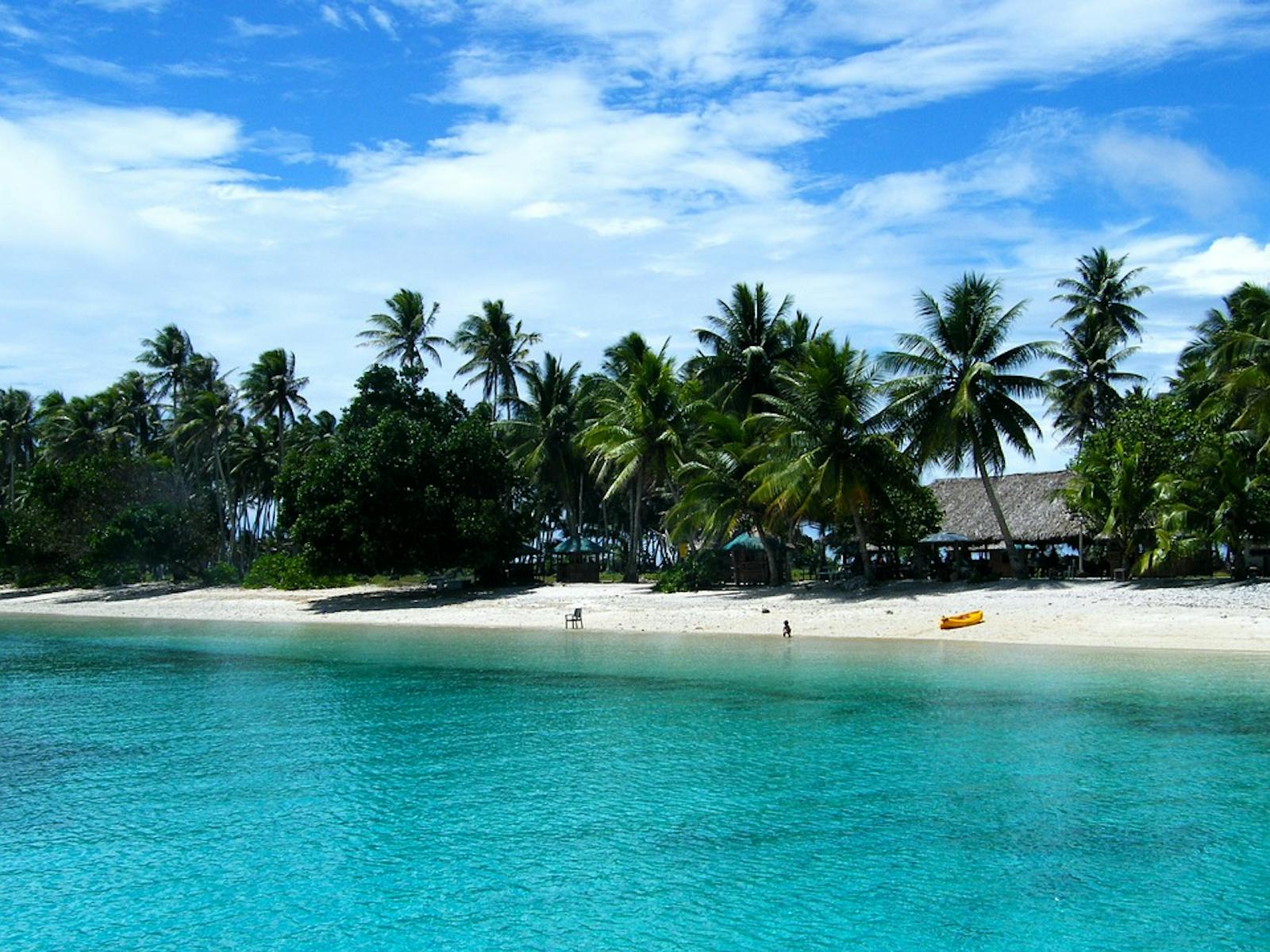Eastern Micronesia Tropical Moist Forests
The ecoregion’s land area is provided in units of 1,000 hectares. The conservation target is the Global Safety Net (GSN1) area for the given ecoregion. The protection level indicates the percentage of the GSN goal that is currently protected on a scale of 0-10. N/A means data is not available at this time.
Bioregion: East Micronesian Islands (OC7)
Realm: Oceania
Ecoregion Size (1000 ha):
53
Ecoregion ID:
621
Conservation Target:
10%
Protection Level:
9
States: Kiribati, Marshall Islands
Low atolls scattered across the central Pacific comprise this ecoregion, with Wake Island and Nauru (an upraised limestone reef called a makatea island) as single-island outliers, and the Marshall Islands and Kiribati (Gilbert Islands) archipelagos of many islands. The terrestrial life found on these sandy, salty, and typhoon-tested atolls—including the coconut crab, the world’s largest land-living arthropod weighing up to 4.1 kg—is hardy and derived from forms that disperse readily across vast ocean distances.

The flagship species of the Eastern Micronesia Tropical Moist Forests ecoregion is the coconut crab. Image credit: Creative Commons
The ecoregion’s islands typically have relatively few species and though their richness and composition varies from one island to another. For example, the relatively undisturbed Pokaka atoll has only 9 species of plant, Arno atoll has 44, whereas the raised limestone island of Nauru has 63 native plants. However, typically on atolls, which are the dominant island type, there is a scrub vegetation hugging the shore with Scaevola frutenscens, Pandanus tectorius, Terminalia samoensis, and Guettarda speciosa.
On stonier soils inland, trees of 6 to 30 m tall could occur, including Barringtonia asiatica, Tournefortia argentea, Hernandia sonora, Neisosperma oppositifolium, Intsia bijuga, Pandanus tectorius, Guettarda speciosa, Pisonia grandis, and Cordia subcordata. There is often a sparse understory of tree seedlings, Asplenium nidus ferns, and patches of Peperomia sp. On sandier soils nearer to lagoons, groves of tall Pisonia trees serve as rookeries for numerous fish-eating seabirds.
Allophylus timorensis, Guettarda speciosa, Intsia bijuga, Pipturus argenteus, Cordia subcordata, and Premna obtusifolia can also be found on sandy interiors. Scrubs of Scaevela with Suriana maritima and Sophora tomentosa edge interior lagoons. Pemphis acidula can cover saline flats and fresh-water swamps may have stands of Pandanus tectorius. Herbaceous plants, such as Triumfetta procumbens, Lepturus repens, Wedelia biflora, Vigna marina, Fleurya ruderalis, and Fimbristylis atollensis may cover areas disturbed by storms.
On the makatea island of Nauru there was a semi-open forest on the central plateau of Calophyllum inophyllum and Ficus prolixa, as well as Terminalia, Premna, Guettarda, and Psidium, with Scaevola taccada on low ridges. Makatea islands are notable for a few endemic plants, but Naura was stripped of vegetation for guano mining and many species possibly were lost. The grass Lepturus gasparricensis is endemic to the Marshall Islands and another, Lepturopetium marshallense, and a false spider lily, Crinum bakeri, are endemic to the Marshalls along with other parts of Micronesia.

Greater frigate bird. Image credit: Charles J Sharp, Creative Commons
Resident land birds are uncommon on the islands, with Nauru hosting the most species at nine. There were two endemic species of bird, the extinct Wake Island rail and the Nauru reed-warbler. Races of the Micronesian pigeon (Ducula oceanica ratakensis and D. o. oceanica) are considered distinct. There are several species of wide-ranging geckos and skinks, but no native mammals. Nesting seabirds are common and once dominated the island ecosystems, showering the ground with nutrient-rich guano. Migratory shorebirds utilize the islands for feeding and resting in large numbers.
All of the islands have been disturbed to some extent, with most being heavily altered through thousands of years of human habitation and impacts. However, Pokaka atoll is among the least disturbed dry atolls in the world. Settlement, agriculture, copra plantations, and the introduction of invasive species, such as seed eating black rats, have altered natural habitat. Guano extraction for phosphate on Nauru has largely denuded the island.
Introduced alien species represent another major threat: predation by black rats and feral cats and hunting of pigeons and coconut crabs seriously threaten their populations. The Wake rail was eaten to extinction by feral cats. Nesting seabirds are killed in great numbers by rats and cats. An introduced monitor lizard must be monitored for impacts, as well. The plants Merremia peltata and Wedelia trilobata, the long-legged crazy ant, and the red-vented Bulbul are other problematic invasive species.

Spinner dolphins. Image credit: Creative Commons
National Biodiversity Strategies and Actions Plans have been developed for all the island groups. The land is owned by communities who are essential stewards of biodiversity. The atolls also have to prepare for inundation by rising sea levels from climate change.
The priority conservation actions for the next decade are to: 1) control and eradicate invasive species on Pokaka Atoll; 2) protect forests at Topside and Buada Lagoon on Nauru; and 3) strengthen prevention measures to keep little red fire ants off of the islands.
Citations
- Mueller-Dombois D, FR Fosberg, editors. 1998. Vegetation of the Tropical Pacific Islands. Springer-Verlag, New York.
- Reimaan National Planning Team. 2008. Reimaan-lok: National Conservation Area Plan for the Marshall Islands 2007-2012.
- van Dijken SG, P Anderson. 2013. Priority Sites for Conservation in Kiribati: Key Biodiversity Areas. Conservation International Pacific Islands Programme, Secretariat of the Pacific Regional Environment Programme, Government of Kiribati Ministry of Environment, Lands, Agriculture Development. Apia, Samoa. 56pp.




